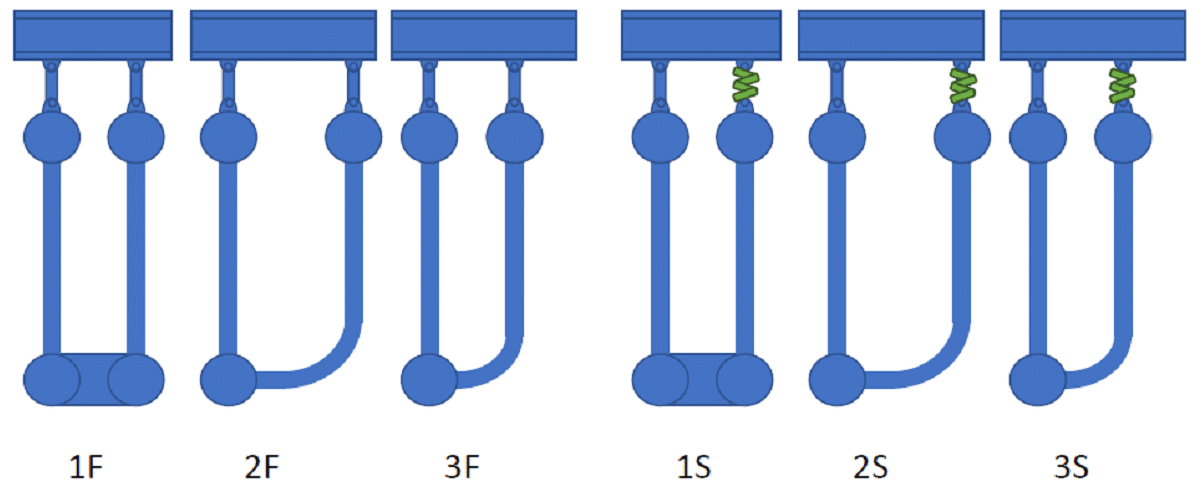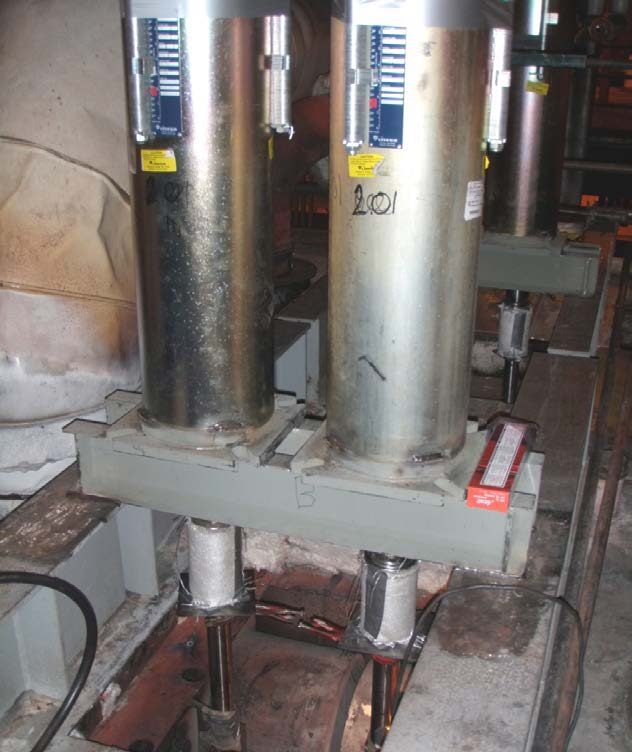Cyclic Service Retrofits
One of the most important industry trends of recent years has been the transition from base load operation to the daily cycling of combined cycle power facilities. This transition has created numerous challenges with respect to HRSG design. Coil layout of older designs that had previously been detailed to be the most economical for fabrication, have proven to be problematic when it comes to the rigors of daily cyclic activity. As such the layout, support and overall design of Superheaters, Reheaters and Economizers coils have evolved in new HRSG construction to meet the needs of these new operational expectations.
Whether it is with the support systems themselves or changes to the layout and construction methods of the coils, Nooter/Eriksen’s unique engineering approach has pushed the state of the art in ways that provide for the most robust coils which are able to withstand today’s more demanding operational requirements.
This however does not have to be the exclusive realm of the newly constructed HRSG. Nooter/Eriksen can, and routinely does, upgrade coils in the existing HRSG market to take advantage of these advanced design considerations allowing them to cycle with little fear of costly forced outages. We can retrofit existing HRSG’s to take advantage of the latest upgrades and provide end-users who currently operate units prone to cyclic tube failures with options that allow them to increase the longevity and lifespan of their facilities.
Lower Header Upgrade
One significant area in which Nooter/Eriksen can offer a significant upgrade to SHTR and RHTR modules is with modifications to the lower header sections. By eliminating the small lower header with long sweeping bends, shown in Figure 1, and replacing it with larger lower header and large bore connection nozzles, Nooter/Eriksen can significantly reduce thermal stress in the tube field, particularly at the tube to header joints.
Details with long sweeping bends are problematic due to changes in the row to row temperatures of the tube field; this temperature difference in combination with the long moment arm of the sweeping bends creates large bending stresses on this joint. By replacing these with vertical tube connections, the bending stress component is eliminated at the tube to header connection and taken in the large bore nozzle connection, which is significantly more robust.

Fig. 1
Nooter/Eriksen can supply and install these fully shop assemble header components. By employing state of the art orbital tube welding during the installation, Nooter/Eriksen can cut down significantly on the time it takes to install these headers and ensure the best possible QA/QC by employing machine welding in lieu of traditional mirror hand welding.
Spring Supported Coil Upgrade
Another powerful method of mitigating the rigors of daily cyclic service can be accomplished by altering the means by which the tube bundles are supported. Traditionally in natural circulation HRSGs, the tube field is hung from the roof structure of the HRSG by means of rigid connections.
Nooter/Eriksen now routinely replaces some of these rigid supports with high capacity spring can supports at strategic locations throughout the SHTR and RHTR sections (See detail 1S). This allows for us to take advantage of the inherent flexibility in the inter-stage process piping between different SHTR and RHTR coil bundles. Because this piping is usually significantly more flexible relative to the coil bundles themselves, it allows the spring supported upper header to move freely in the vertical direction based on the needs of the row to row temperature differentials seen in the coil bundle sections.
In this way we’re able to offer significant reductions in the thermal stress seen by the tube bundle during transient start-ups cases as well as during steady state operation. Additionally, in some casings these springs can be added to coil nozzle or manifold piping external to the HRSG casing. When this is the case, it makes for an extremely simple and noninvasive installation. Other cases will require the addition of header lugs, and while this can be a bit more involved, it can still offer relatively simple installation with minimal modification and cost to the end-user.


Fig. 1

3D Model of Spring Supported Coil

Spring Support Field Install

Spring Supported Coil



